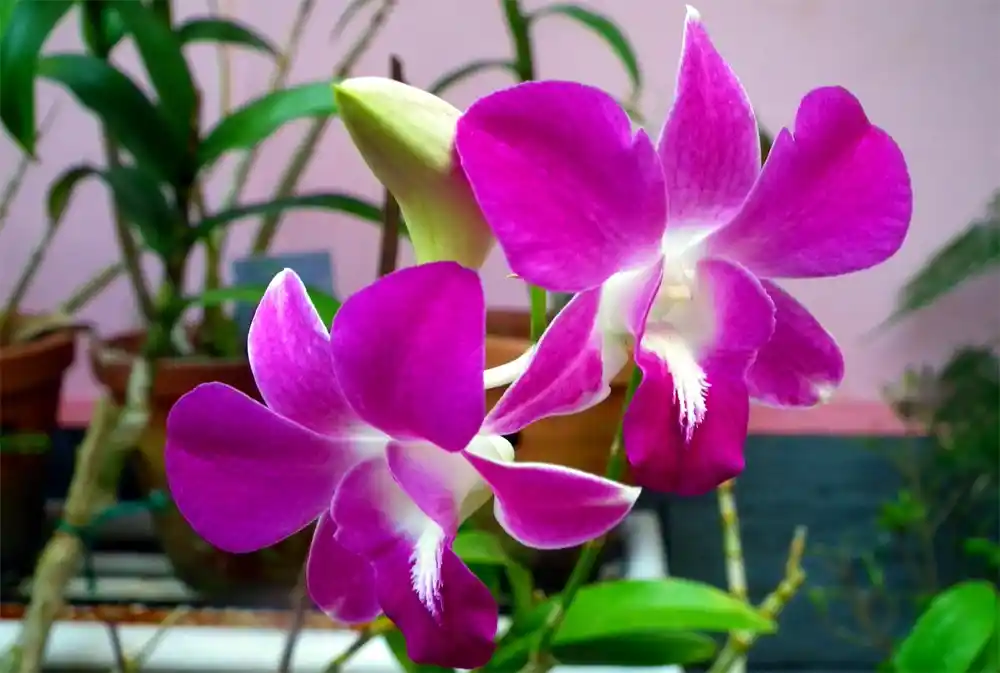Orchid Care: The Essential Steps
Orchids are one of the most beautiful and exotic plants in the world. They come in a variety of shapes, sizes, and colors, and they can be found in almost any climate. While orchids are relatively easy to care for, there are some essential steps that must be taken in order to ensure that your orchid thrives. This article will provide an overview of the essential steps for orchid care, including watering, fertilizing, repotting, and more.
Watering
Watering is one of the most important aspects of orchid care. Orchids need to be watered regularly, but not too often. The frequency of watering will depend on the type of orchid and the climate in which it is growing. Generally, orchids should be watered once a week, but in hotter climates, they may need to be watered more often. When watering, it is important to use lukewarm water and to avoid getting the leaves and flowers wet. Additionally, it is important to allow the soil to dry out between waterings.
Fertilizing
Fertilizing is another important step in orchid care. Orchids need to be fertilized regularly in order to ensure that they have the nutrients they need to thrive. Generally, orchids should be fertilized every two weeks with a balanced fertilizer. It is important to use a fertilizer specifically designed for orchids, as other fertilizers may be too strong and can damage the plant. Additionally, it is important to avoid fertilizing during the winter months, as this can cause the plant to become stressed.
Repotting
Repotting is an essential step in orchid care. Orchids should be repotted every two to three years in order to ensure that they have enough room to grow. When repotting, it is important to use a potting mix specifically designed for orchids. Additionally, it is important to use a pot that is slightly larger than the previous one, as this will give the orchid more room to grow.
Light
Light is another important factor in orchid care. Orchids need bright, indirect light in order to thrive. Generally, orchids should be placed in a spot that receives bright, indirect light for at least six hours a day. Additionally, it is important to avoid placing the orchid in direct sunlight, as this can cause the leaves to burn.
Humidity
Humidity is also an important factor in orchid care. Orchids need a humid environment in order to thrive. Generally, orchids should be kept in an environment with a humidity level of at least 50%. Additionally, it is important to avoid placing the orchid in an environment that is too dry, as this can cause the leaves to become dry and brittle.
Temperature
Temperature is another important factor in orchid care. Orchids need to be kept in an environment with temperatures between 65 and 80 degrees Fahrenheit. Additionally, it is important to avoid placing the orchid in an environment that is too hot or too cold, as this can cause the plant to become stressed.
Pruning
Pruning is an important step in orchid care. Pruning helps to keep the orchid healthy and encourages new growth. Generally, orchids should be pruned once a year in order to remove any dead or damaged leaves. Additionally, it is important to avoid pruning too much, as this can cause the plant to become stressed.
FAQs
Q: How often should I water my orchid?
A: Generally, orchids should be watered once a week, but in hotter climates, they may need to be watered more often. When watering, it is important to use lukewarm water and to avoid getting the leaves and flowers wet. Additionally, it is important to allow the soil to dry out between waterings.
Q: How often should I fertilize my orchid?
A: Orchids should be fertilized every two weeks with a balanced fertilizer. It is important to use a fertilizer specifically designed for orchids, as other fertilizers may be too strong and can damage the plant. Additionally, it is important to avoid fertilizing during the winter months, as this can cause the plant to become stressed.
Q: How often should I repot my orchid?
A: Orchids should be repotted every two to three years in order to ensure that they have enough room to grow. When repotting, it is important to use a potting mix specifically designed for orchids. Additionally, it is important to use a pot that is slightly larger than the previous one, as this will give the orchid more room to grow.
Q: How much light does my orchid need?
A: Orchids need bright, indirect light in order to thrive. Generally, orchids should be placed in a spot that receives bright, indirect light for at least six hours a day. Additionally, it is important to avoid placing the orchid in direct sunlight, as this can cause the leaves to burn.
Q: How much humidity does my orchid need?
A: Orchids need a humid environment in order to thrive. Generally, orchids should be kept in an environment with a humidity level of at least 50%. Additionally, it is important to avoid placing the orchid in an environment that is too dry, as this can cause the leaves to become dry and brittle.
Q: What temperature should my orchid be kept in?
A: Orchids need to be kept in an environment with temperatures between 65 and 80 degrees Fahrenheit. Additionally, it is important to avoid placing the orchid in an environment that is too hot or too cold, as this can cause the plant to become stressed.
Q: How often should I prune my orchid?
A: Orchids should be pruned once a year in order to remove any dead or damaged leaves. Additionally, it is important to avoid pruning too much, as this can cause the plant to become stressed.







